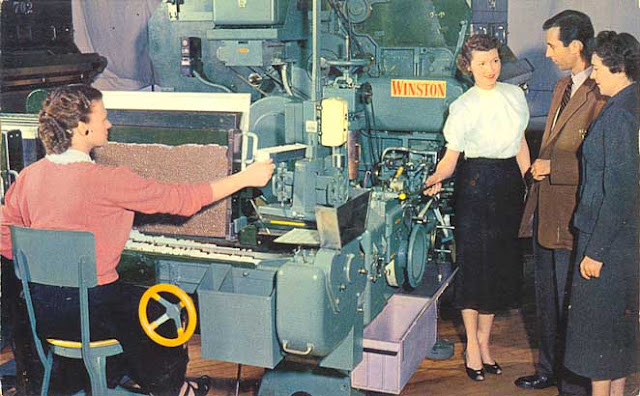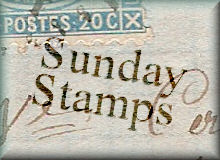This postcard is from the R. J. Reynolds Plant (approximately 50+ years ago). One woman is operating a machine used in manufacturing cigarettes, while another women is giving a factory tour. The back of the postcard has the following description:
North Carolina is the nation's largest producer of cigarettes and the R. J. Reynolds Plant in Winston-Salem is the largest in the world. Visitors are always welcome for free guided tours.Here is some more current information about R. J. Reynolds from Wikipedia:
The R. J. Reynolds Tobacco Company (RJR), based in Winston-Salem, North Carolina and founded by R. J. Reynolds in 1875, is the second-largest tobacco company in the U.S. (behind Altria Group). RJR is an indirect wholly owned subsidiary of Reynolds American Inc. which in turn is 42% owned by British American Tobacco of the United Kingdom.And here are some historical tidbits from the R.J. Reynolds website:
R. J. Reynolds brands include Camel, Kool, Winston, Salem, Doral, Eclipse,and Pall Mall. Brands still manufactured but no longer receiving significant marketing support include Barclay, Belair, Capri, Carlton, GPC, Lucky Strike, Misty, Monarch, More, Now, Tareyton, Vantage, and Viceroy. The company also manufactures certain private-label brands. Five of the company's brands are among the top ten best selling cigarette brands in the United States, and it is estimated that one in three cigarettes sold in the country were manufactured by R. J. Reynolds Tobacco Company. In 2010 R. J. Reynolds acquired the rights to the smokeless tobacco products Kodiak and Grizzly dip.
- In 1913, Reynolds Tobacco introduced Camel cigarettes, containing a blend of several different types of tobacco – a blend that would come to be called “the American blend.” Camel became the first nationally popular cigarette in the United States.
- Reynolds Tobacco established virtually every packaging standard in the U.S. cigarette industry. The 20-cigarette pack was introduced by Reynolds Tobacco in 1913, and in 1915 the company introduced the one-piece, 10-pack carton. In 1931, Reynolds Tobacco became the first company to package its cigarettes with a moisture-proof, sealed cellophane outerwrap to preserve freshness.
- Reynolds Tobacco began diversifying into foods and other non-tobacco businesses in the 1960s.
Visit Sepia Saturday
To See More Vintage Images

























